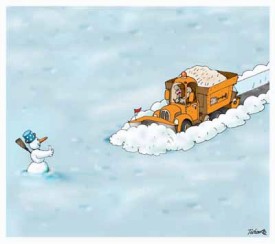Ten years ago, NATO launched its bombings of Serbia
NATO's Operation Allied Force, launched on 24 March, lasted for 78 days and ended with the Kumanovo Military-Technical Agreement between NATO and Belgrade authorities, as well as the UN Security Council Resolution 1244, adopted on 10 June 1999.
(KosovoCompromise Staff) Tuesday, March 24, 2009
The "humanitarian bombing", as it was labeled in the West, was considered as "aggression" by Yugoslavia. In international political circles, it was dubbed "Madeleine's war" in reference to US Secretary of State Madeleine Albright, who had been the most hawkish supporter of the bombing.
Many saw it as a precedent for controversial military interventions in other parts of the world.
The bombing campaign was marred by controversies over:
* Its illegality under international law: the bombing was triggered without a UN Security Council resolution
* The number of deaths: during the bombing campaign, estimates of the number of victims were highly inflated. The State Department on 19 April said that up to 500,000 Kosovo Albanians were missing and feared dead, later reducing the number to 100,000. However, post-war assessment put the figures of a total number of dead and missing (including clashes between the KLA and the Yugoslav forces, NATO bombings and civilian casualties) at between 4,000 and 10,000 people -- both Albanians and Serbs.
* The refugee flows: NATO claimed that the reason for the refugee flows was a policy of "ethnic cleansing" by the Yugoslav forces. Belgrade argued that the refugee flows began only after NATO started its bombings and were a result of a combination of factors, including bombings and the clashes between the KLA and the Yugoslav forces. The total number of Albanian refugees and displaced was estimated at 800,000 people by the UNHCR. Tens of thousands of Serbs were displaced towards central Serbia.
* The efficiency of the strikes: Operation Allied Force inflicted much less damage on the Yugoslav military than originally thought. Army barracks were evacuated and mobile resources ingeniously camouflaged. Allied pilots bombed hundreds of decoy planes and tanks, dummy targets, heat simulators, fake bridges and airfields. NATO had claimed that the Yugoslav Army had been decimated, but as it turned out after the war, most mobile Yugoslav Army assets survived unscathed. Only 12 tanks were subsequently confirmed destroyed by over 34,000 sorties of 1,100 NATO aircraft.
* The choice of targets: Controversial targets included urban areas, economic and infrastructure assets and everything that what was later labeled "collateral damage".
NATO bombs hit refugee columns of ethnic Albanians in Meja (78 dead) and Korisa (87 dead), an international Belgrade-Thessaloniki train in Grdelica (10 dead), buses carrying Serb and Albanian civilians in Luzane (47 dead) and Savine Vode (17 dead), a refugee camp at Majino Selo (5 dead), the Serbian state television building (16 dead), the Chinese Embassy (4 dead), a Belgrade hospital (3 dead), the downtown area of Aleksinac (12 dead), Surdulica (16 dead) and Novi Pazar (14 dead), while hundreds of clusters bombs fell on Nis, Serbia's second city (12 dead)...
In the later stages of the campaign, NATO targeted strategic targets such as bridges, factories and electricity plants in order to cause disruption and economic damage.
The attacks against the chemical and the petrol industry caused substantial environmental damage and pollution, while the use of depleted uranium weapons was highly criticized by environmental groups.
The total damage of the bombing is estimated at over $30 billion.
* The final outcome of the bombing: the stated goals of "stopping a humanitarian crisis", toppling Milošević and establishing a multi-ethnic democracy in Kosovo have blatantly failed.
The bombings actually exacerbated, if not created, the refugee crisis; the Serbian army suffered minimum damage; Milosevic emerged from the conflict politically stronger and Kosovo became more mono-ethnic than ever after a campaign of unchallenged post-war violence against the Serbs.






